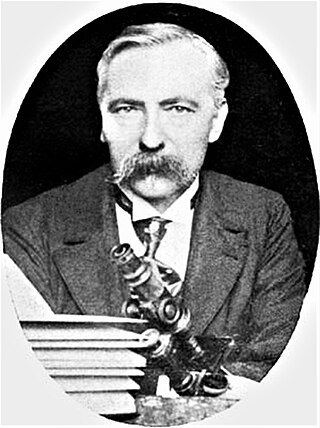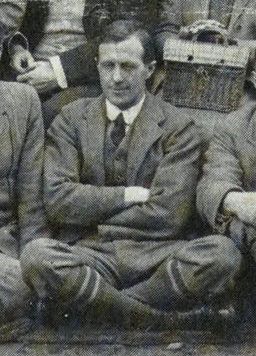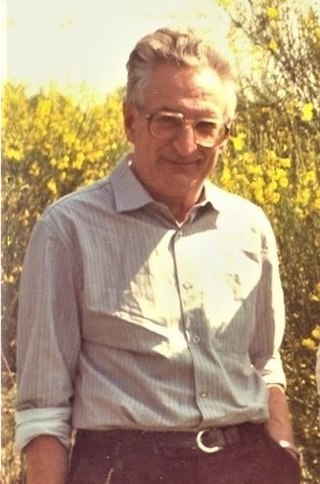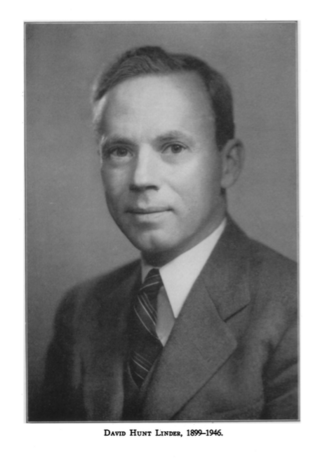
Mycology is the branch of biology concerned with the study of fungi, including their taxonomy, genetics, biochemical properties, and use by humans. Fungi can be a source of tinder, food, traditional medicine, as well as entheogens, poison, and infection. Mycology branches into the field of phytopathology, the study of plant diseases. The two disciplines are closely related, because the vast majority of plant pathogens are fungi. A biologist specializing in mycology is called a mycologist.
Edred John Henry Corner FRS was an English mycologist and botanist who occupied the posts of assistant director at the Singapore Botanic Gardens (1929–1946) and Professor of Tropical Botany at the University of Cambridge (1965–1973). Corner was a Fellow of Sidney Sussex College from 1959.
Christopher Edmund Broome was a British mycologist. The standard author abbreviation Broome is used to indicate this person as the author when citing a botanical name.

Narcisse Théophile Patouillard was a French pharmacist and mycologist.

Alexander Hanchett Smith was an American mycologist known for his extensive contributions to the taxonomy and phylogeny of the higher fungi, especially the agarics.
Peter Darbishire Orton was an English mycologist, specialising in agarics.
Richard William George Dennis, PhD, was an English mycologist and plant pathologist. He is survived by a son, Stephen.
Derek Agutter Reid was an English mycologist.

Carleton Rea was an English mycologist, botanist, and naturalist.

Arthur Anselm Pearson was an English mycologist. He often published under the name A. A. Pearson. The standard author abbreviation A.Pearson is used to indicate this person as the author when citing a botanical name.

Meinhard Michael Moser was an Austrian mycologist. His work principally concerned the taxonomy, chemistry, and toxicity of the gilled mushrooms (Agaricales), especially those of the genus Cortinarius, and the ecology of ectomycorrhizal relationships. His contributions to the Kleine Kryptogamenflora von Mitteleuropa series of mycological guidebooks were well regarded and widely used. In particular, his 1953 Blätter- und Bauchpilze [The Gilled and Gasteroid Fungi ], which became known as simply "Moser", saw several editions in both the original German and in translation. Other important works included a 1960 monograph on the genus Phlegmacium and a 1975 study of members of Cortinarius, Dermocybe, and Stephanopus in South America, co-authored with the mycologist Egon Horak.

Robert Lee Gilbertson was a distinguished American mycologist and educator. He was a faculty member at University of Arizona for 26 years until his retirement from teaching in 1995; he was a Professor Emeritus at U of A until his death on October 26, 2011, in Tucson, Arizona. 2011. He held concurrent positions as Plant Pathologist, Agricultural Experiment Station, University of Arizona (1967–95) for a project Research on wood-rotting fungi and other fungi associated with southwestern plants and was collaborator and consultant with Center for Forest Mycology Research, US Forest Service, Forest Products Laboratory, Madison, Wisconsin (1957–1981).
James Martin Trappe is a mycologist and expert in the field of North American truffle species. He has authored or co-authored 450 scientific papers and written three books on the subject. MycoBank lists him as either author or co-author of 401 individual species, and over the course of his career he has helped guide research on mycorrhizal fungi, and reshaped truffle taxonomy: establishing a new order, two new families, and 40 individual genera.

David Hunt Linder (1899–1946) was an American mycologist known for his work on the Helicosporous fungi and his dedications for the advancement of mycological knowledge. He curated the Farlow Herbarium of Cryptogamic Botany at Harvard University and founded a highly respected journal Farlowia.
Lois Hattery Tiffany (1924–2009) was a mycologist who taught for over 50 years at Iowa State University (ISU) and was known as "Iowa's mushroom lady". She won a number of awards, including becoming the first recipient of both the Mycological Society of America's Weston Award and the Iowa Governor’s Medal for Science Teaching. She published on many different aspects of fungal life, but her special area of research was Iowa's prairie fungi.
David Norman Pegler is a British mycologist. Until his retirement in 1998, he served as the Head of Mycology and assistant keeper of the herbarium at the Royal Botanic Gardens in Kew. Pegler received his BSc from London University in 1960, thereafter studying tropical Agaricales with R.W.G. Dennis as his graduate supervisor. He earned a master's degree in 1966, and a PhD in 1974. His graduate thesis was on agarics of east Africa, later published as A preliminary agaric flora of East Africa in 1977. In 1989, London University awarded him a DSc for his research into the Agaricales.
Kenneth A. Harrison was a Canadian mycologist. He was for many years a plant pathologist at what is now the Atlantic Food and Horticulture Research Centre in Nova Scotia. After retirement, he contributed to the taxonomy of the Agaricomycotina, particularly the tooth fungi of the families Hydnaceae and Bankeraceae, in which he described several new species.
Robert W. Lichtwardt was a Brazilian-born American mycologist specializing in the study of arthropod-associated, gut-dwelling fungi (trichomycetes). He is known for his online monograph and interactive keys to trichomycete taxa.
Stanley John Hughes (1918–2019) was a Canadian scientist who is known throughout the global field of mycology for developing and introducing a precise and meticulous system for classifying fungi that is still used today. A naturalized Canadian, he was a federal research scientist for Agriculture and Agri-Food Canada at what is today the Ottawa Research and Development Centre.
John William Hotson was an American botanist and a professor of botany at University of Washington. He was a founder of the herbarium at the University of Washington and a pioneer of the systematic study of bulbiliferous anamorphic fungi. He was the first to make a comprehensive study of plant rust in the state of Washington.







